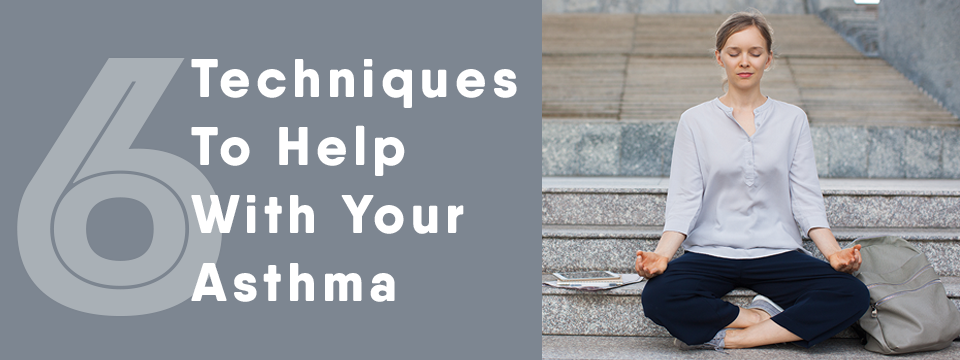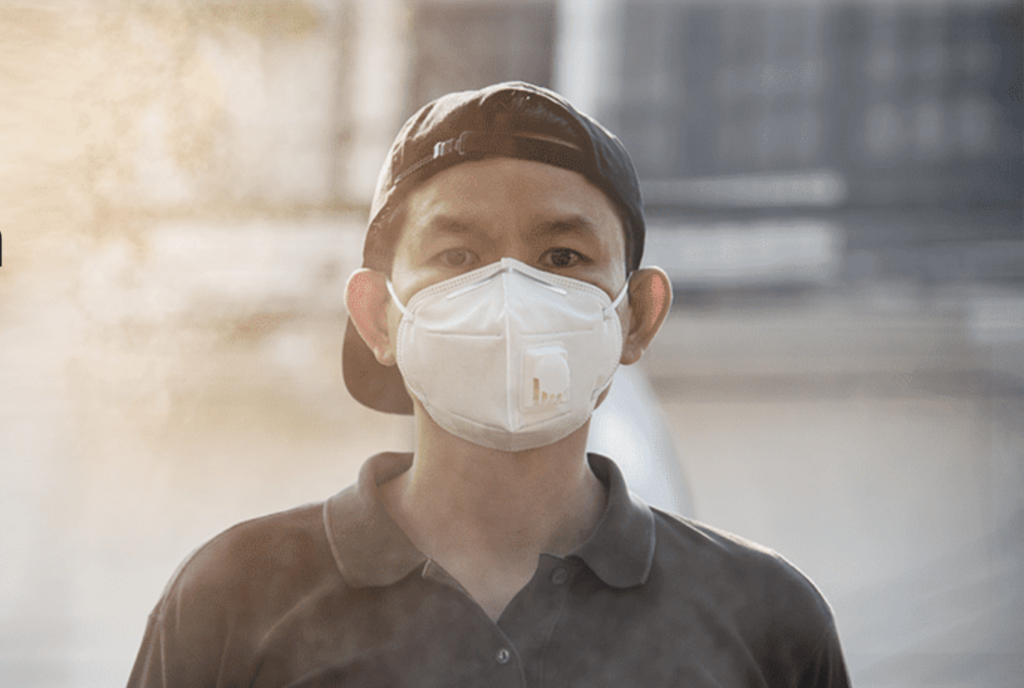
6 Techniques To Help With Your Asthma Induced Breathing Difficulties
The below content is derived from research done using sources available on the internet. Safey Medical Devices Inc and its subsidiaries do not take any responsibility for the accuracy of the content. No medical decision should be taken on the basis of below content without consulting with your Medical Practitioner.
Living with asthma can also mean living with breathing difficulties. Try these 6 breathing techniques to help improve your various asthma symptoms.
Studies show that people living with asthma tend to breath faster than people with unaffected lungs.
Furthermore, it is believed that asthmatics face another breathing difficulty – breathing through their mouths.
This results in a direct hit of cool and dry air straight into the lung.
This in itself is a direct asthma trigger.
When this type of air gets into your lungs, it can result in the need for a reliever inhaler as a matter of urgency, alongside other necessary asthma medication.
When your asthma is causing you significant breathing difficulties and shortness of breath and chest tightness seem to be ever more prevalent, it can be particularly worrying. For you as the patient, but also for your loved ones watching and feeling helpless.
But there are things you can do to help take back control.
Read on to discover some simple breathing exercises that could control your breathing issues and help to ward off future asthma attacks.
*Breathing exercises you can do*
When it comes to the management of your asthma, a 2014 article published in
The European Respiratory Society (ERS) journal stated that:
“Breathing exercises can improve patient-reported outcomes and psychological state
and
“Breathing exercises should be offered to all asthma patients with symptoms or impaired quality of life despite standard treatment”
This recent study highlights the positive impact that breathing exercises might have in relation to your asthma management, and in turn, improve your overall quality of life.
The article also highlighted that:
“Over-breathing (hyperventilation) and abnormal breathing patterns (dysfunctional breathing) are commonly associated with anxiety, and breathing-control exercises have long been used as a treatment for anxiety and panic.
Hyperventilation and other abnormalities in breathing have also been associated with asthma, implicated as triggers for bronchoconstriction and the production of asthma-like symptoms in patients of all levels of objective asthma severity.”
So, what are some helpful breathing exercises?
Diaphragmatic breathing
As a basic breathing technique that helps to maximize air distribution in your lungs, diaphragmatic (or abdominal) breathing is the most efficient and relaxed way of obtaining a substantial amount of air.
Diaphragmatic breathing can help with the breathing difficulties associated with asthma as it has two important effects on the body:
It is a relaxing method, as opposed to the type of breathing in the upper chest – known as ‘emergency mode’ – typically associated with an asthma attack.
It is a sign that your body is in a peaceful state and helps it to regenerate.
Breathing too quickly and irregularly (which is often the case in asthmatics) narrows the airways in your lungs to the point where it can be scary, as it’s hard to catch your breath.
It can also cause further symptoms such as chest pain, dizziness and anxiety.
*METHOD*
When you practice this type of breathing, you can choose to lie down or sit straight up.
Concentrate on your breathing. Preferably you should breathe in slowly through your nose.
Place one hand flat on your upper chest and the other hand on your stomach.
When you inhale, focus on your abdomen, as it is this part of your body that needs to be moving out and not your chest.
Exhale very slowly, and ensure that your abdomen is moving in an inwards motion.
Try to make your exhalation breath twice the length as your inhalation breath.
Buteyko breathing
Konstantin Buteyko created this type of breathing during the 1950’s as a way to breathe more slowly and deeply.
As rapid breathing is a common feature in people diagnosed with asthma, the Buteyko method can help to decrease symptoms like shortness of breath.
Buteyko uses a measurement called the Control Pause (CP). This is the amount of time between breaths that an individual can comfortably hold breath.
People with asthma who regularly practice Buteyko breathing should notice an increase in this Control Pause, and a decrease in pulse rate. According to studies, this can lead to decreased asthma symptoms.
Buteyko breathing isn’t just one type of exercise, it uses a series of reduced-breathing exercises to teach you how to focus on your breath and to slow it right down.
*METHOD*
Sit upright and relax your entire body.
Focus on your breath and close your eyes whilst also looking up.
Breathe through your nose gently, ensuring to keep your mouth closed.
When you draw in a breath, do so slowly. Make sure you also keep the pace on the exhale. Do so until you feel there is no air left in your lungs.
Hold your breath as long as you can and then return to gentle breathing.
Pursed lip breathing
This type of breathing exercise can be utilised if you are in the midst of an asthma attack. Since shortness of breath is one of the main symptoms of asthma, this technique is an ideal method to help relieve it.
*METHOD*
First, relax. Close your mouth and then breathe in slowly through your nose.
Then, you just purse your lips as if you are about to whistle.
Finally, you breathe out slowly through these pursed lips, to a count of four.
You should exhale for twice as long as you inhale.
This should be done while using diaphragmatic breathing as described above to make breathing difficulties disappear.
Yoga
Yoga is one of those all-around exercises that can help to improve a variety of health issues. From localized pain, stress, anxiety and as it turns out, asthma, it’s a wide term with various different forms.
Combining movement with deep, meditative breathing, yoga is an exercise that can really help to improve asthma breathing difficulties and overall lung function, as some smaller studies have found.
Yoga can also help to quickly reopen your airways, clear mucus and stop wheezing in its tracks.
Studies have also indicated that specific yoga breathing exercises
– also known as pranayama – can reduce asthma symptoms whilst others can reduce inhaler usage.
The most popular type of yogic breathing is known as the Ujjayi breathing technique.
*METHOD*
Here, you take a long breath and focus on filling up your stomach. Then move on to filling up your chest.
While you inhale, the stomach is the first to go in followed by the chest. This facilitates maximum oxygen retention by the body.
This is an excellent way to reduce respiratory issues, and lung-related problems.
Nasal breathing
Nasal breathing exercises have been shown to be a worthy technique when it comes to exercise-induced asthma.
As asthmatics are more likely to breathe through their mouths, this can lead to more severe asthma symptoms. Mouth breathing accelerates water loss and when you practice breathing through your nose, you will notice that it adds warmth and humidity to the air you take in, which can help to reduce asthma symptoms.
*METHOD*
Sit comfortably but make sure to maintain good posture, with a straight and shoulders relaxed.
Place the tip of the index finger and middle finger of the right hand in between the eyebrows, the ring finger and little finger on the left nostril, and the thumb on the right nostril.
Press your thumb down on the right nostril and breathe out gently through the left nostril.
Breathe in from the left nostril, pressing gently on the left nostril with your ring finger and little finger. Take away the right thumb from the right nostril and then breathe out from the right.
Breathe in from the right nostril and exhale from the left.
Continue inhaling and exhaling from alternate nostrils for 10 full rounds.
Papworth method
Developed in Papworth Hospital, this method has been used for over 50 years. Similar to the Buteyko breathing technique and the diaphragmatic breathing exercise, “…It focuses on problems of dysfunctional breathing including hyperventilation and hyperinflation that are often found in asthma sufferers.”
The Papworth Method has helped to cut asthma symptoms by a third is not designed to assist asthma sufferers with severe episodes or those who suffer from allergy induced attacks.
These particular exercises are helpful to those diagnosed as having mild asthma and the associated symptoms of rapid breathing and mouth breathing.
The exact method will need to be taught by a specialized health practitioner.









